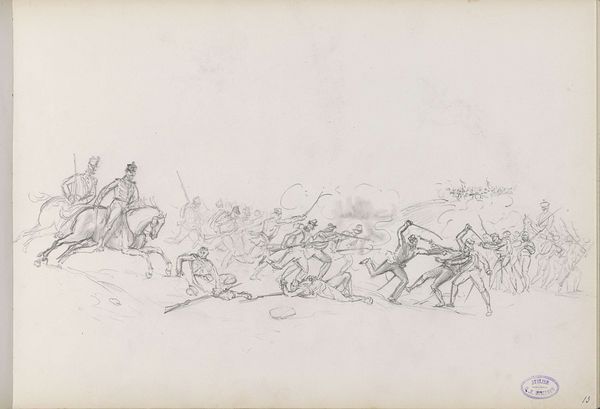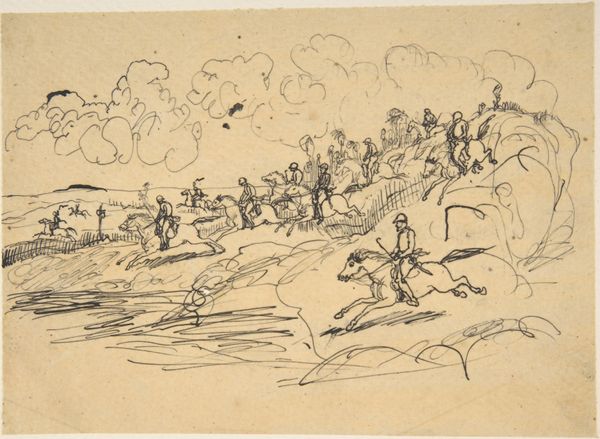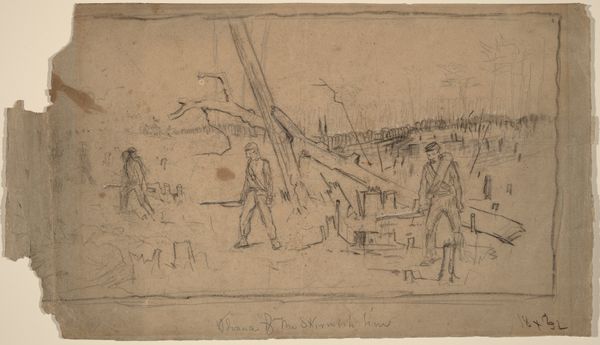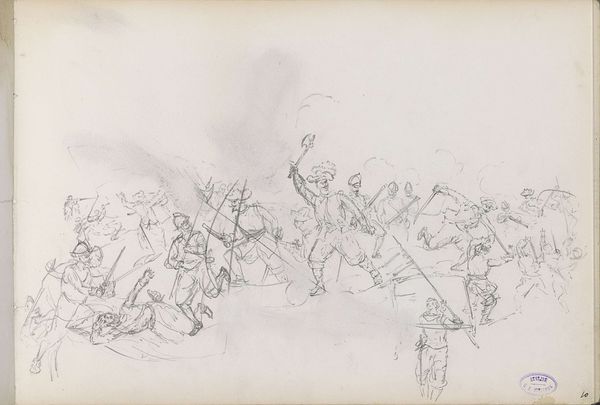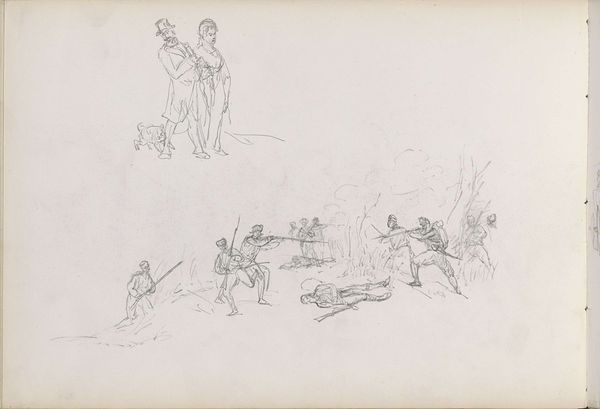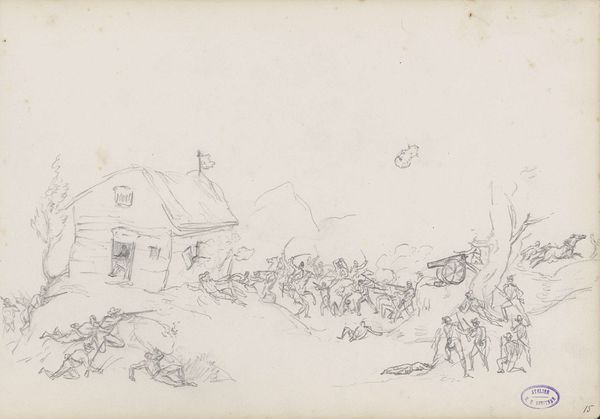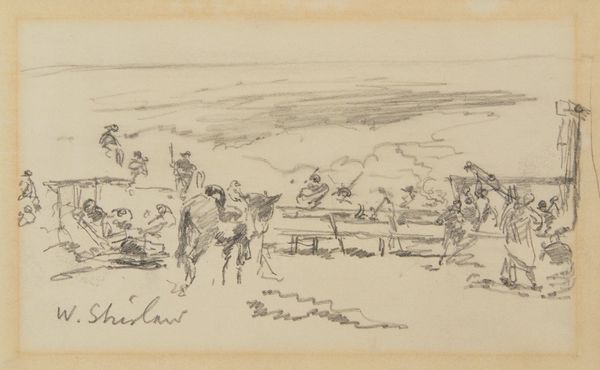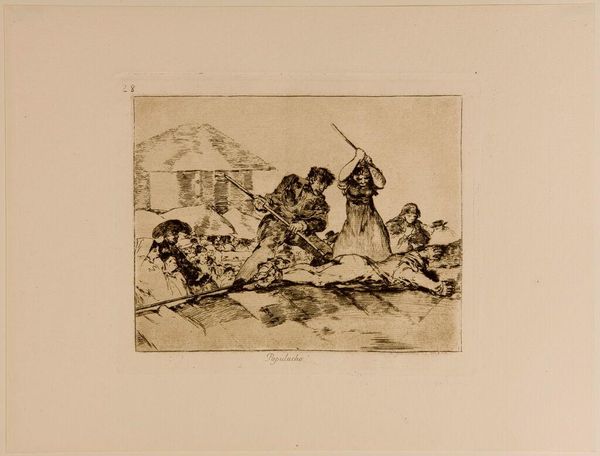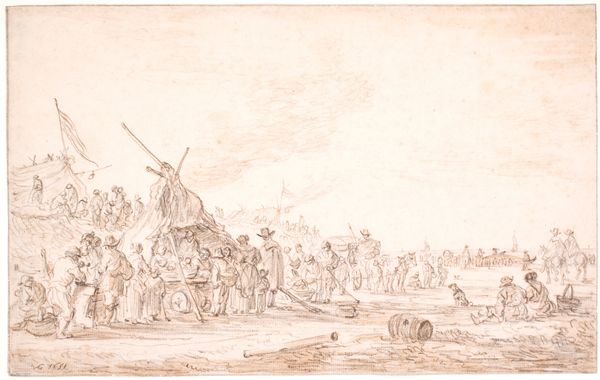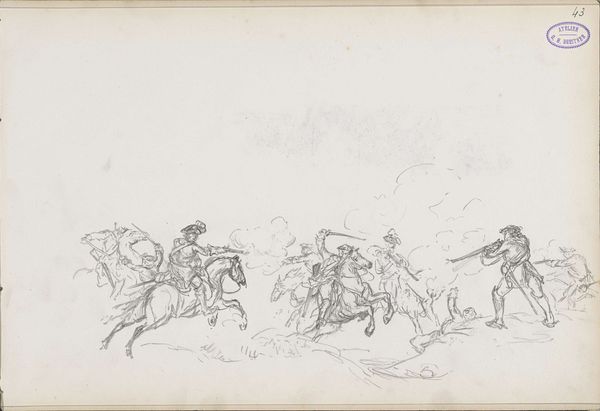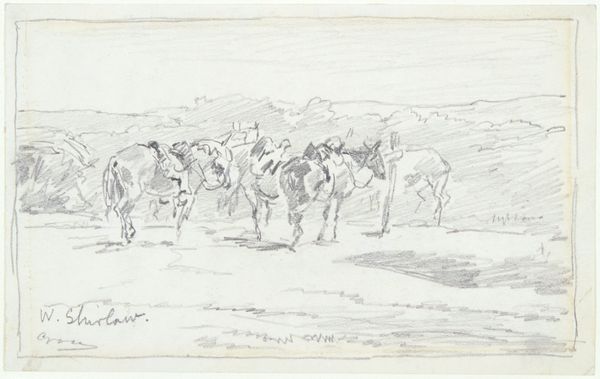
drawing, graphite
#
drawing
#
quirky sketch
#
pen sketch
#
pencil sketch
#
incomplete sketchy
#
personal sketchbook
#
ink drawing experimentation
#
pen-ink sketch
#
united-states
#
graphite
#
sketchbook drawing
#
sketchbook art
#
initial sketch
Dimensions: 4 1/2 x 7 15/16 in. (11.43 x 20.16 cm)
Copyright: Public Domain
Editor: We’re looking at "Sketch made on Indian Reservation," a graphite drawing from the 19th century by Walter Shirlaw. It has an almost voyeuristic feel to it. A busy scene, captured quickly. How do you interpret this work, especially considering its title? Curator: This sketch invites us to consider the power dynamics inherent in its creation. A white artist observing and documenting an Indigenous community... it raises questions of representation, authority, and the gaze. Whose story is being told, and for what purpose? Editor: So you're suggesting we should be critical of Shirlaw's position? Curator: Absolutely. Think about the context: the late 19th century, a period marked by westward expansion, the forced assimilation of Native Americans, and the systematic dismantling of their cultures. Shirlaw's sketch becomes a document embedded within that history, a visual record that potentially reinforces colonial narratives. What specific details within the image strike you as potentially problematic? Editor: Perhaps the sketchiness itself? It feels... unfinished, almost like the artist didn't fully commit to understanding the people he was depicting. Curator: Precisely. That lack of detail can be read as a form of erasure, a flattening of Indigenous identities into a generalized "other." But also note the presence, the activity shown. Can that activity be seen as resistance in and of itself, proof of endurance against all odds? Editor: That's a great point, I hadn’t thought of it that way! I guess viewing it through that lens adds another dimension. Curator: By acknowledging the historical context and power dynamics, we can engage with the work in a more nuanced and critical way. It allows us to question the artist's intentions and the broader social forces at play. Editor: I see what you mean. It's definitely given me a lot to consider when looking at art that depicts marginalized communities. Thanks!
Comments
No comments
Be the first to comment and join the conversation on the ultimate creative platform.

